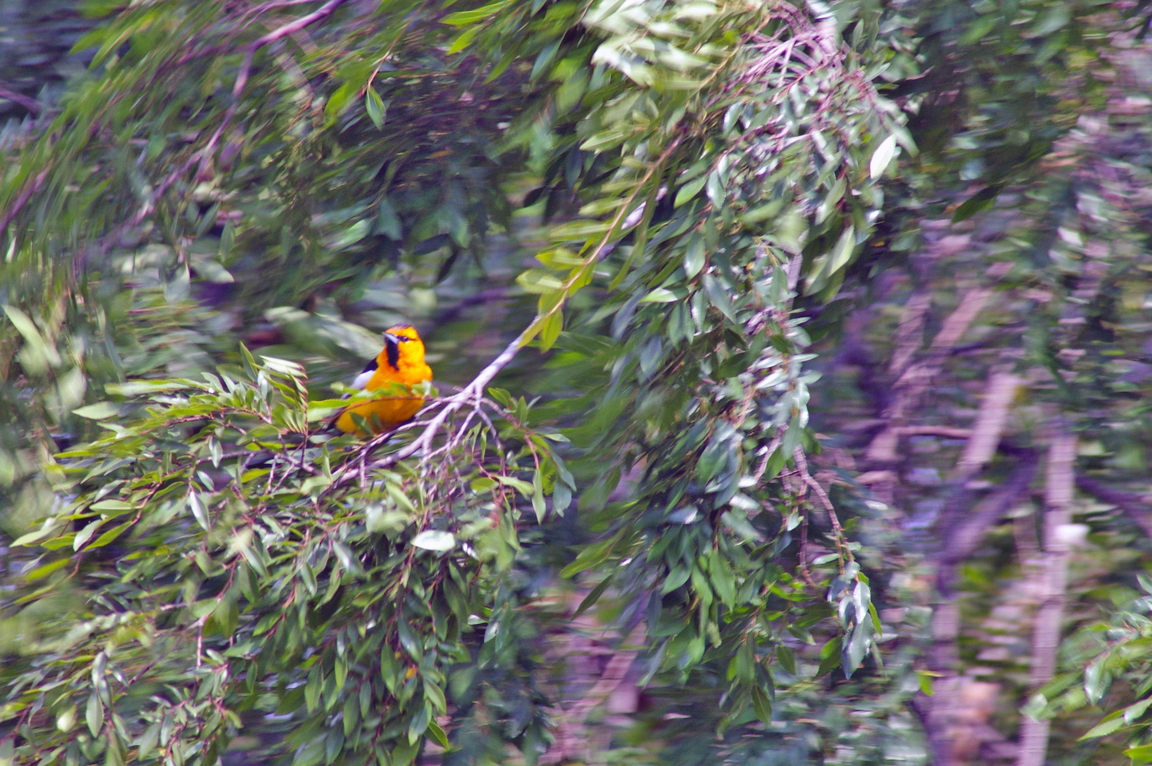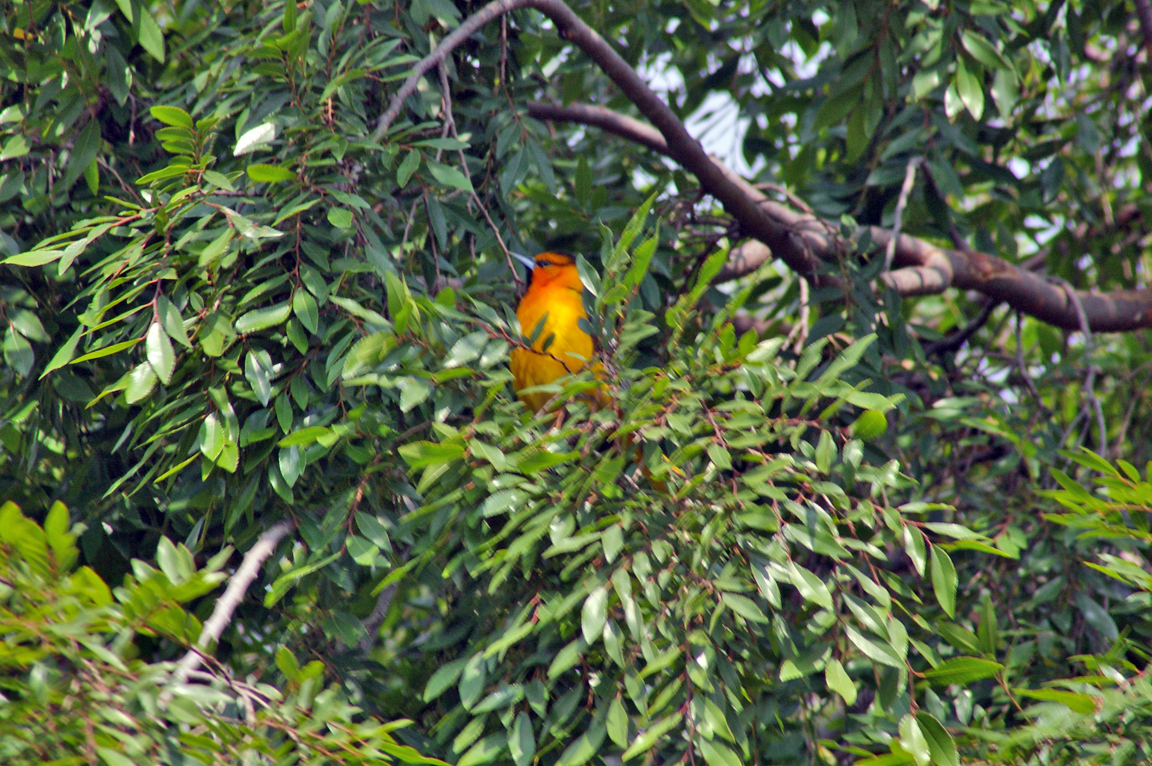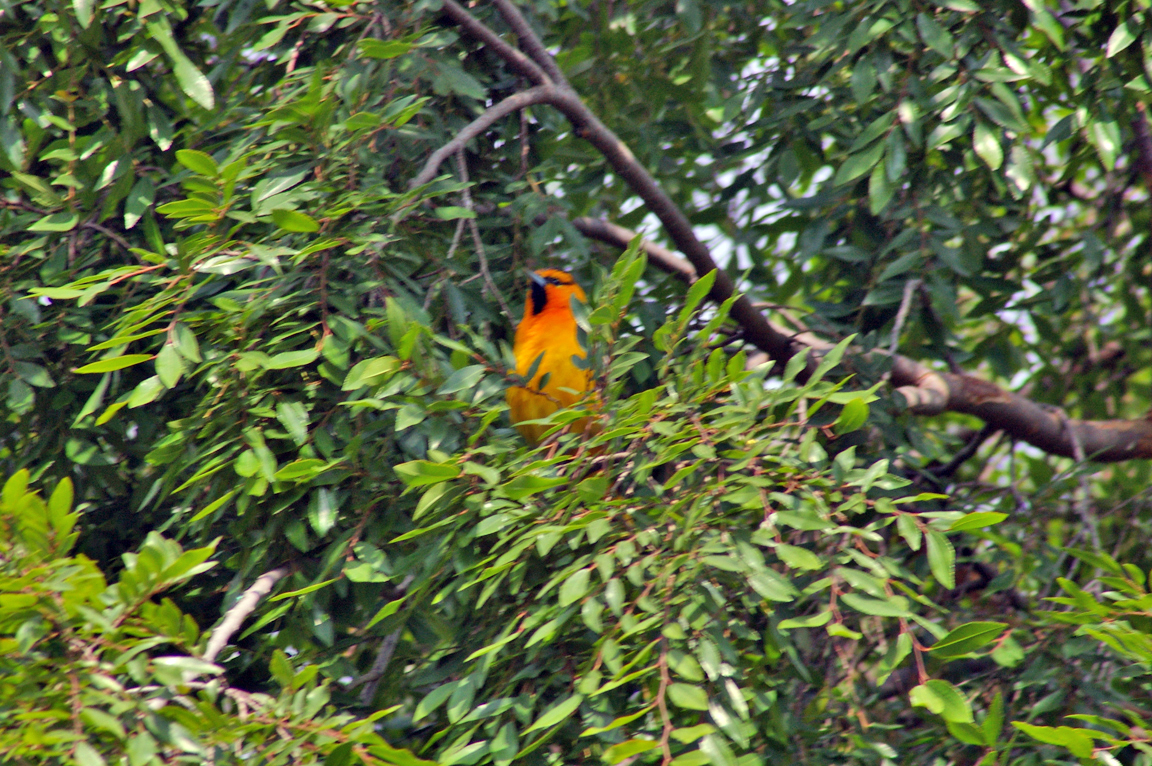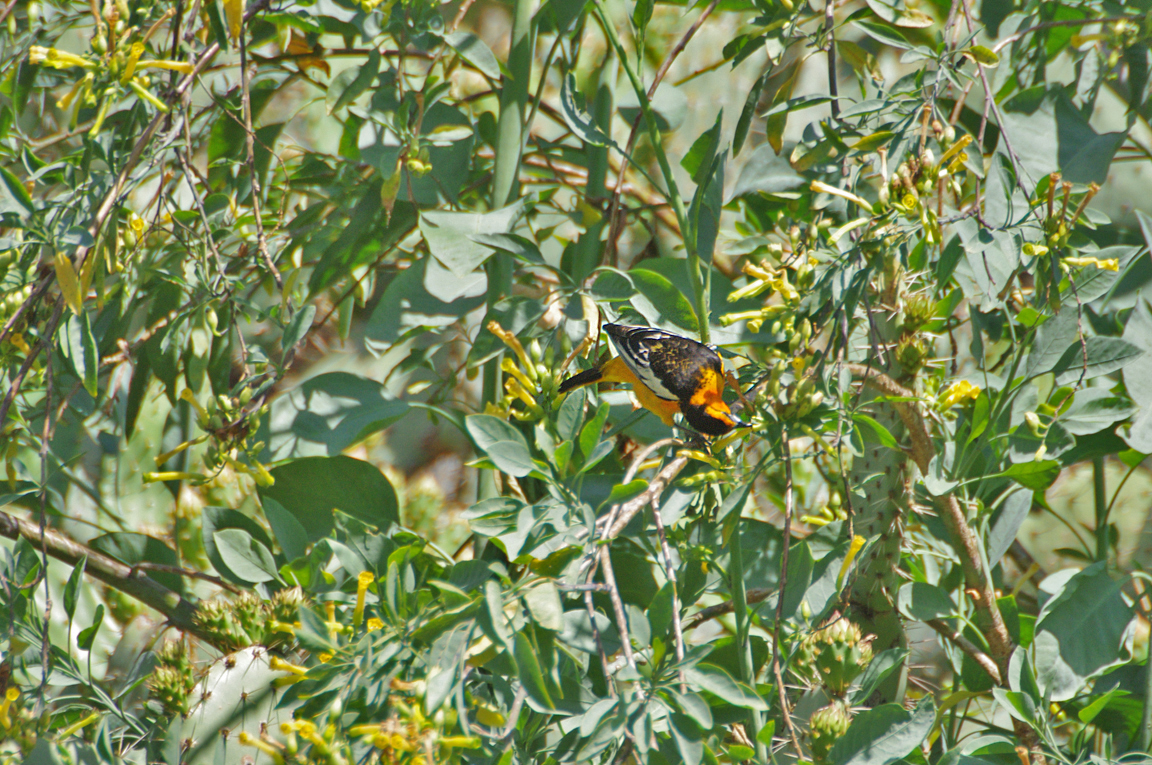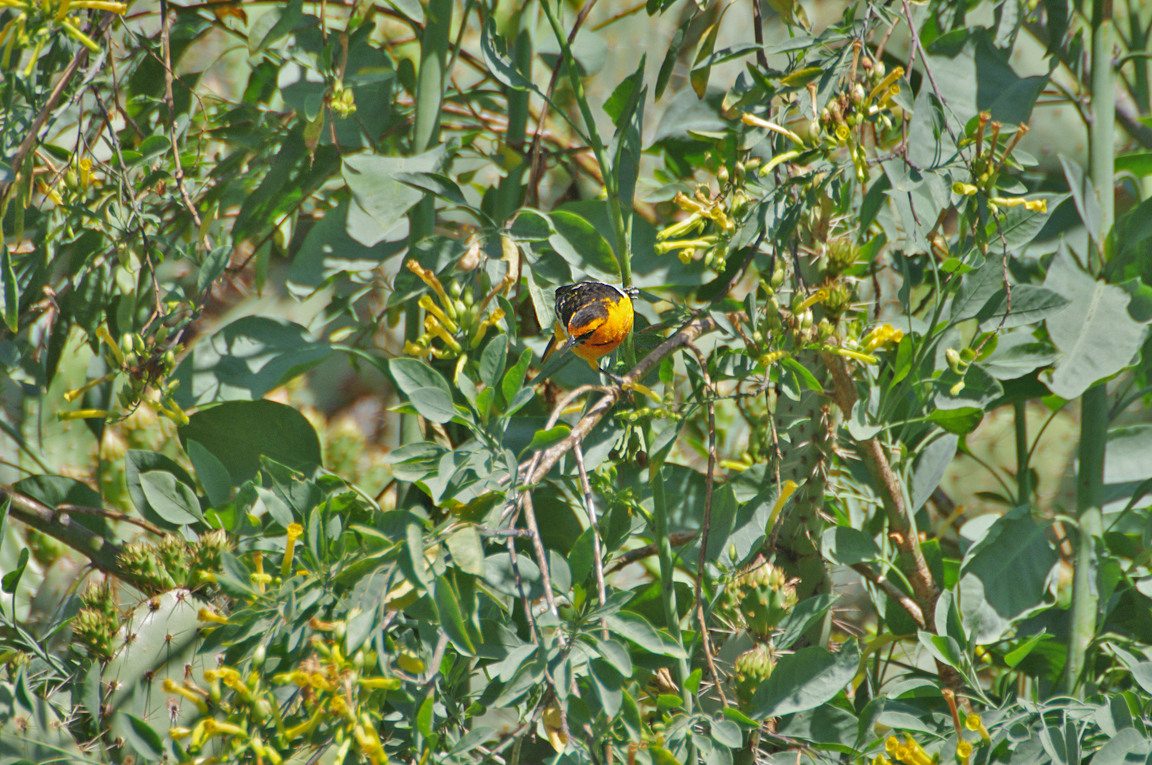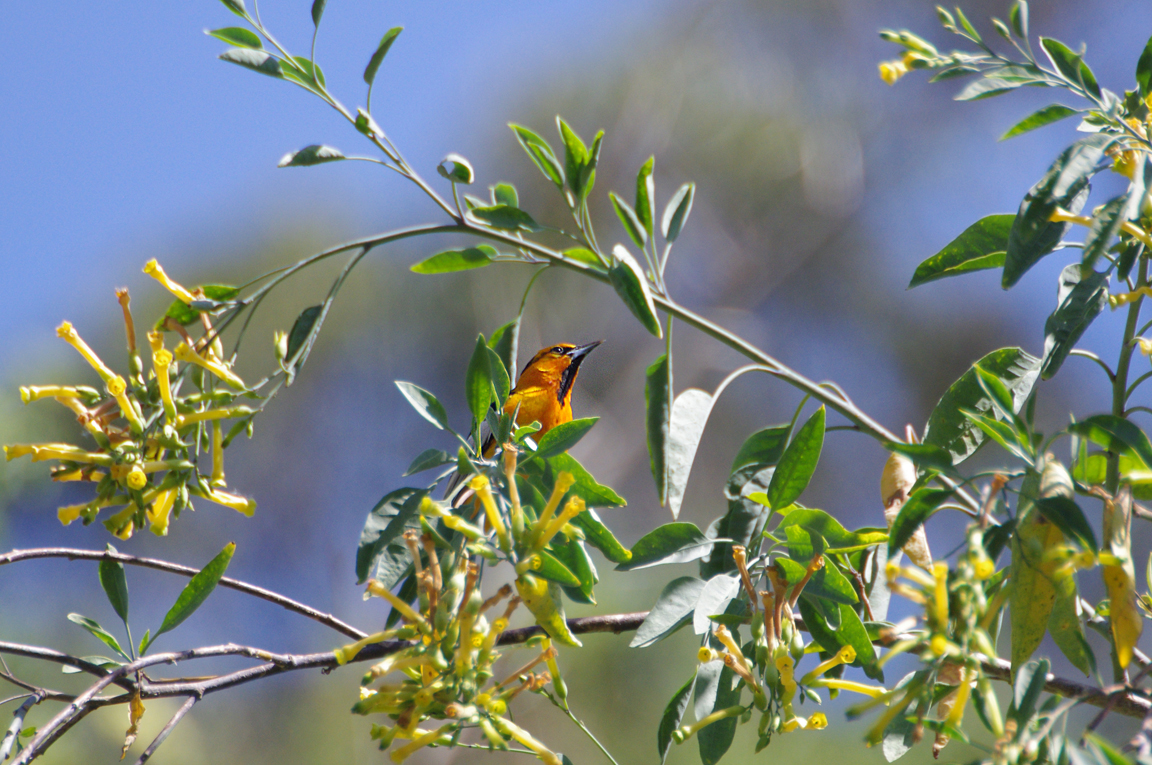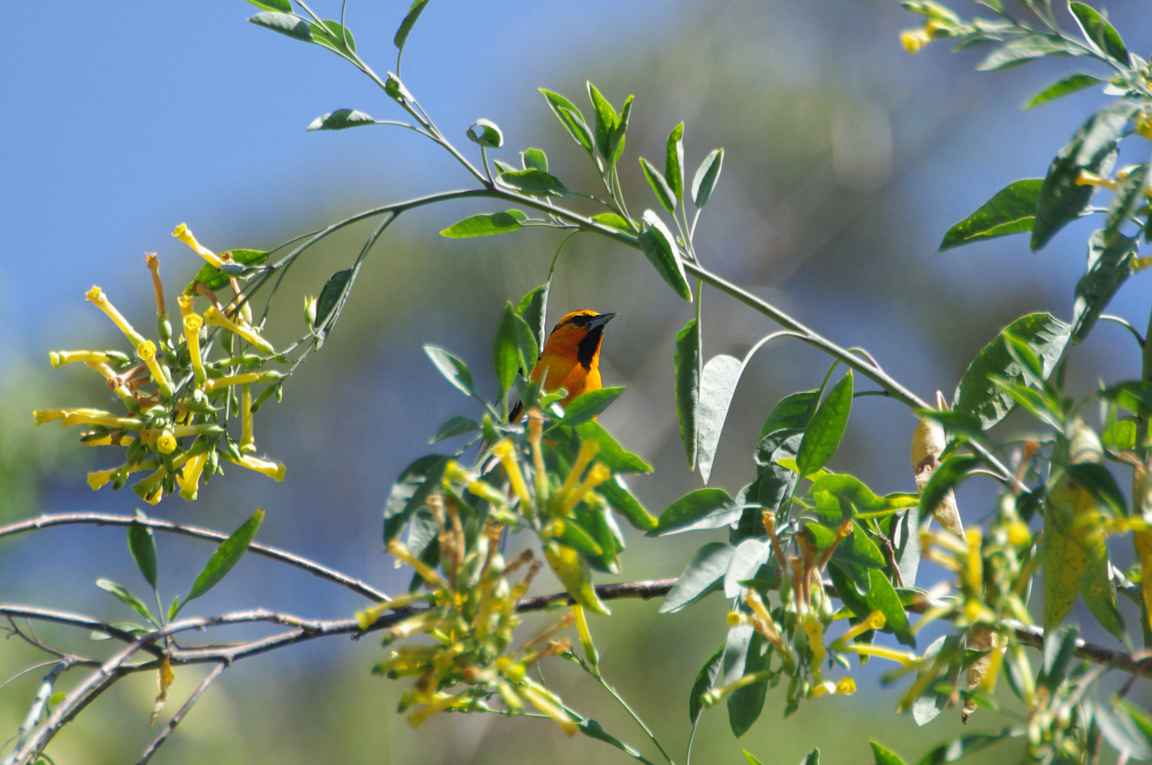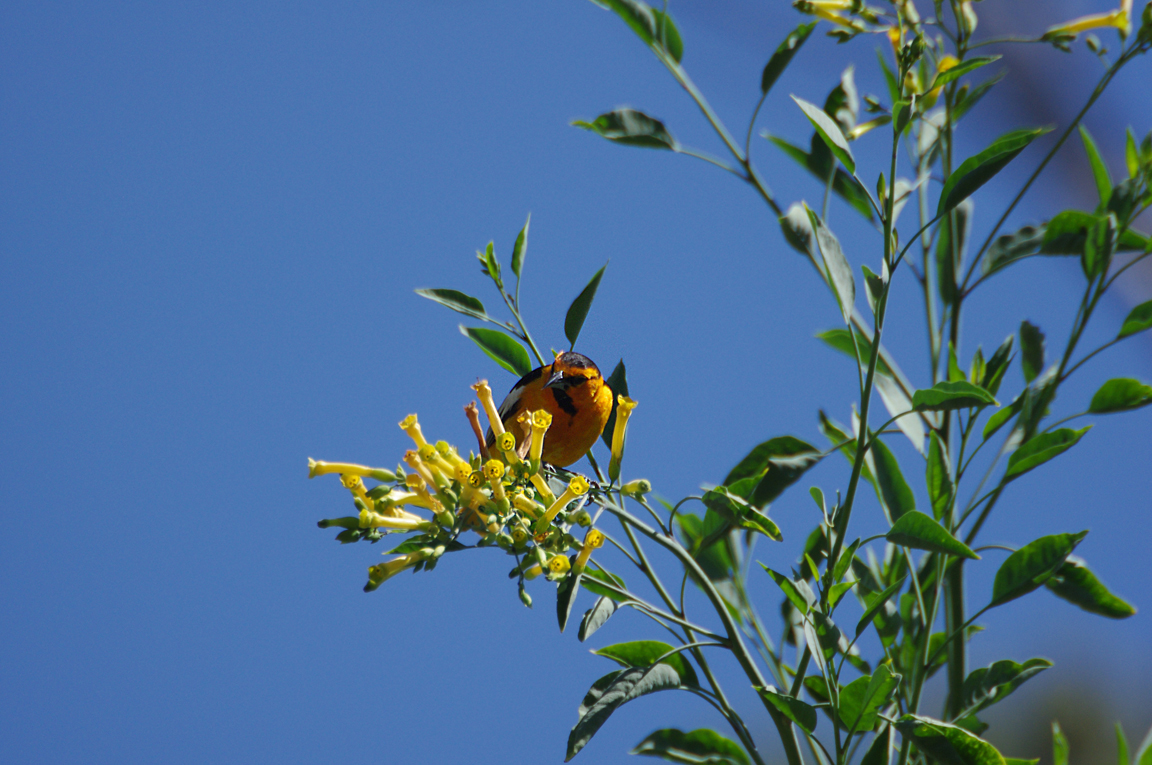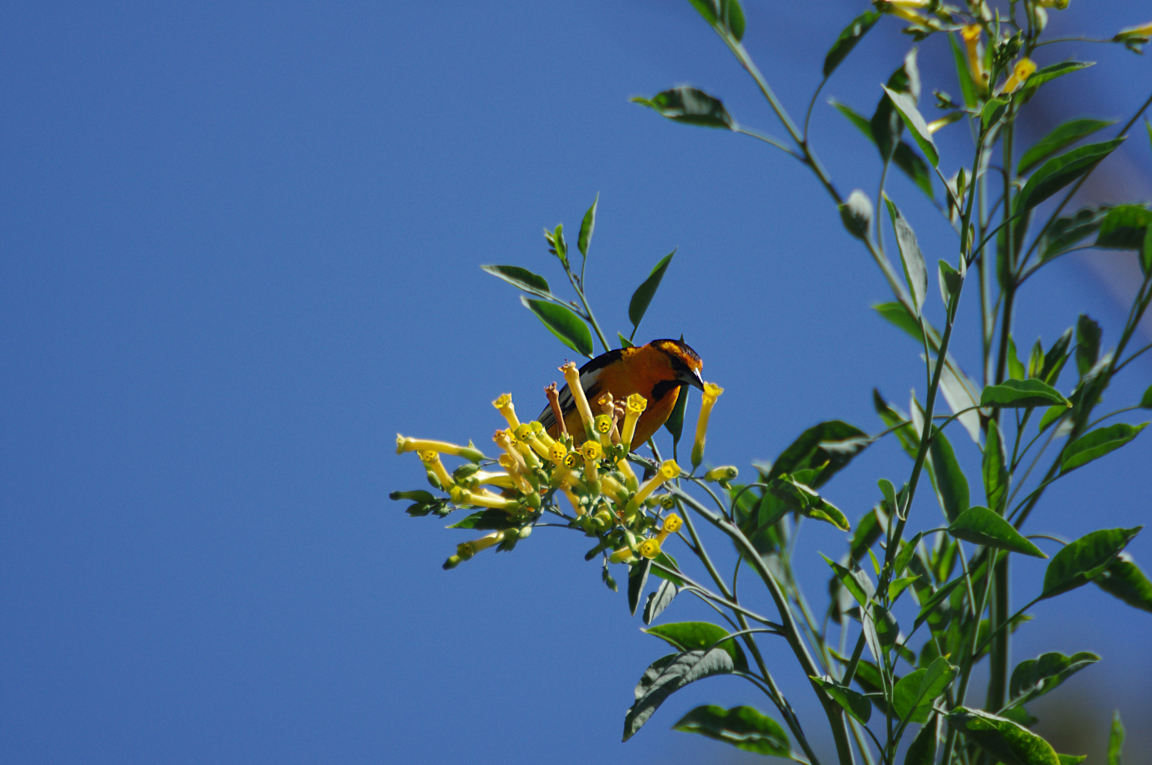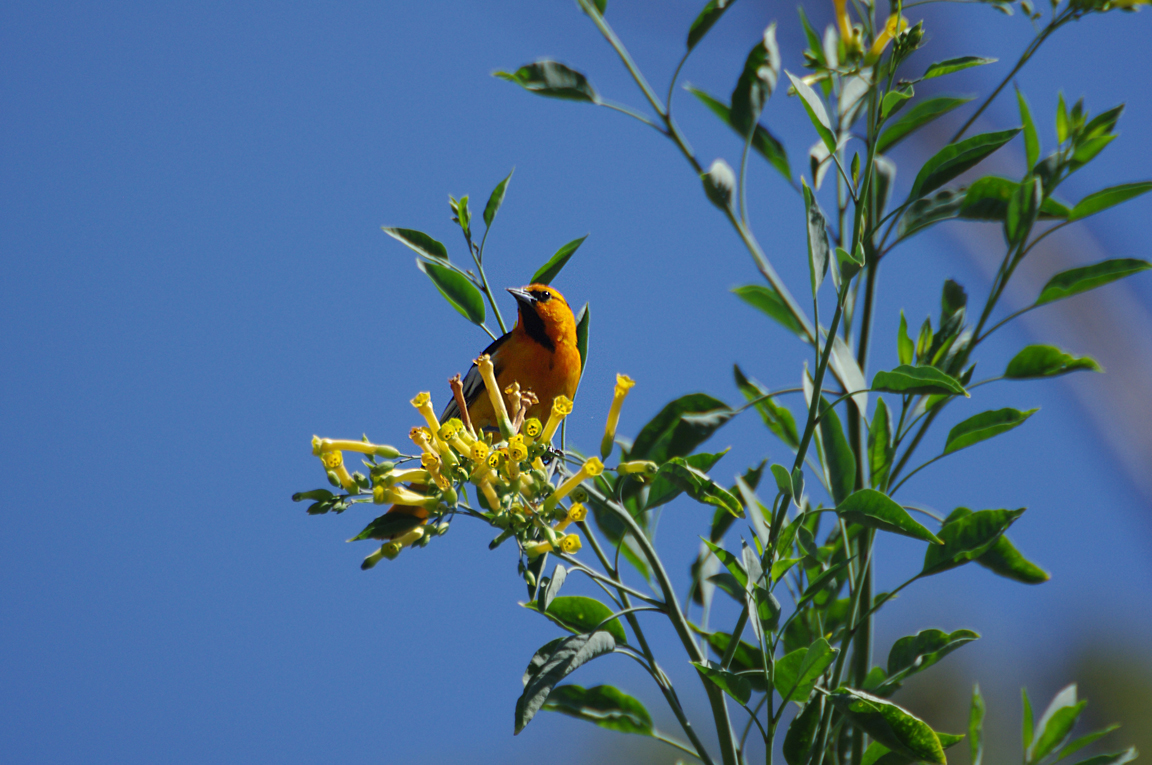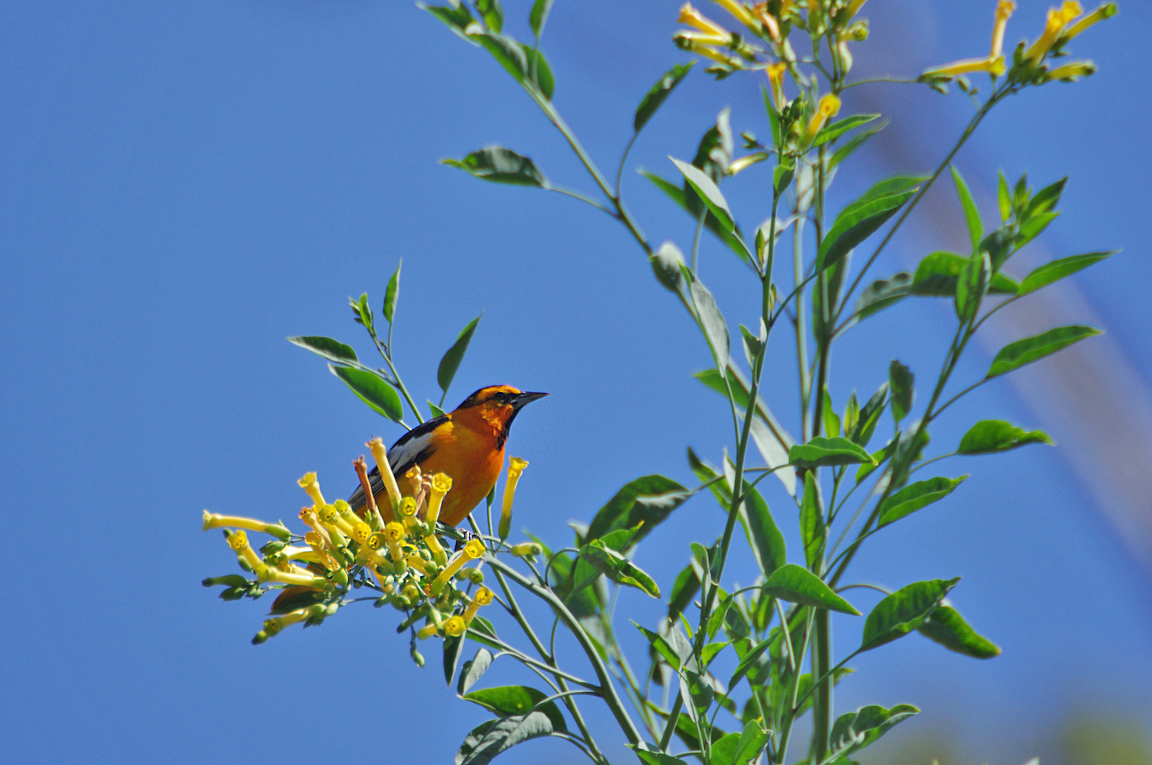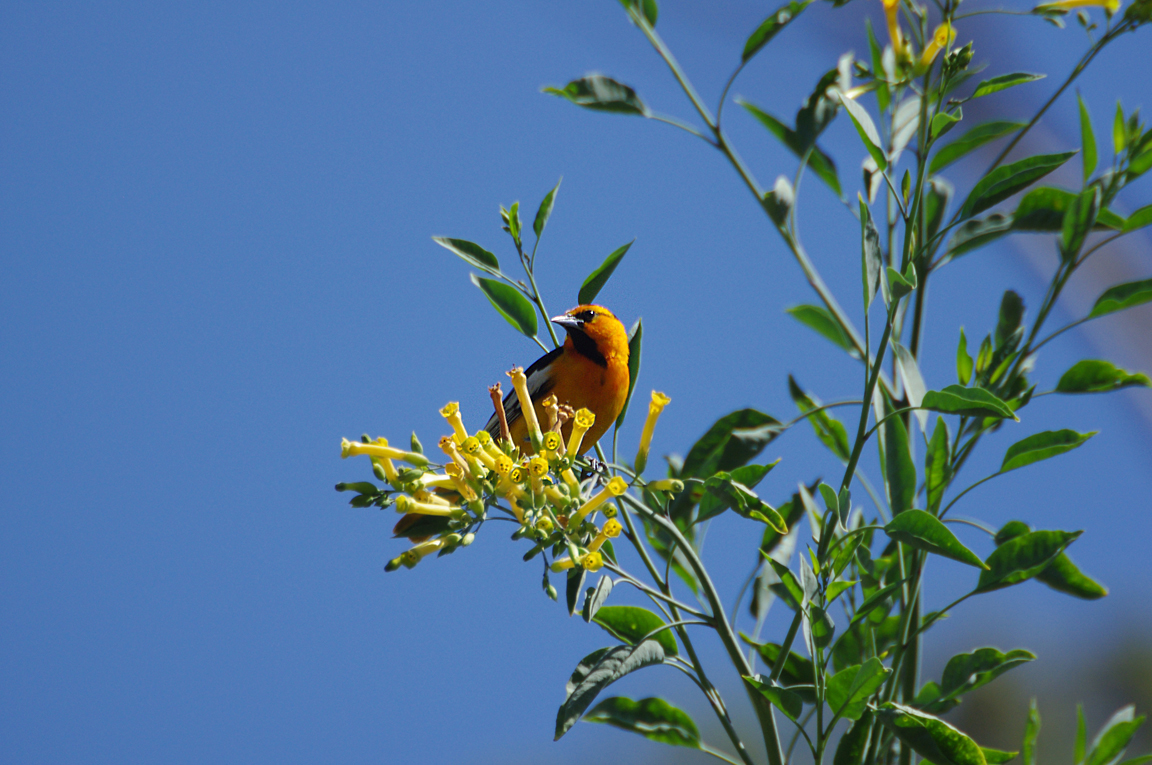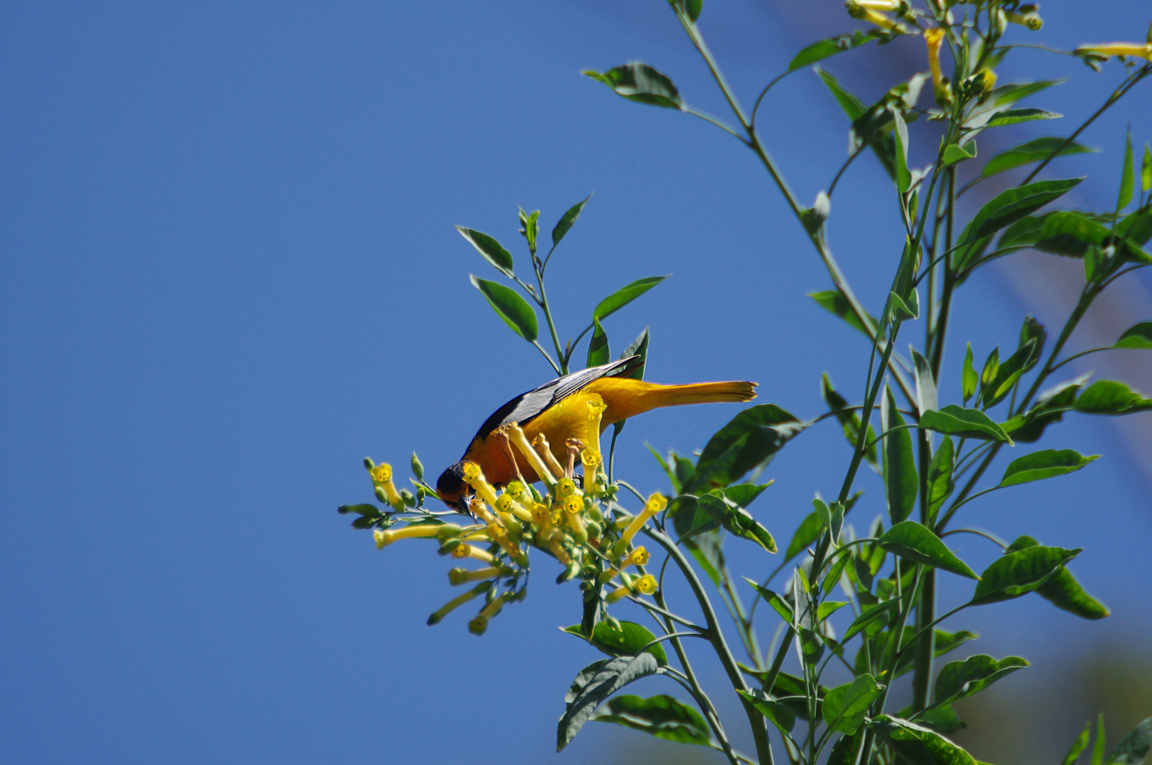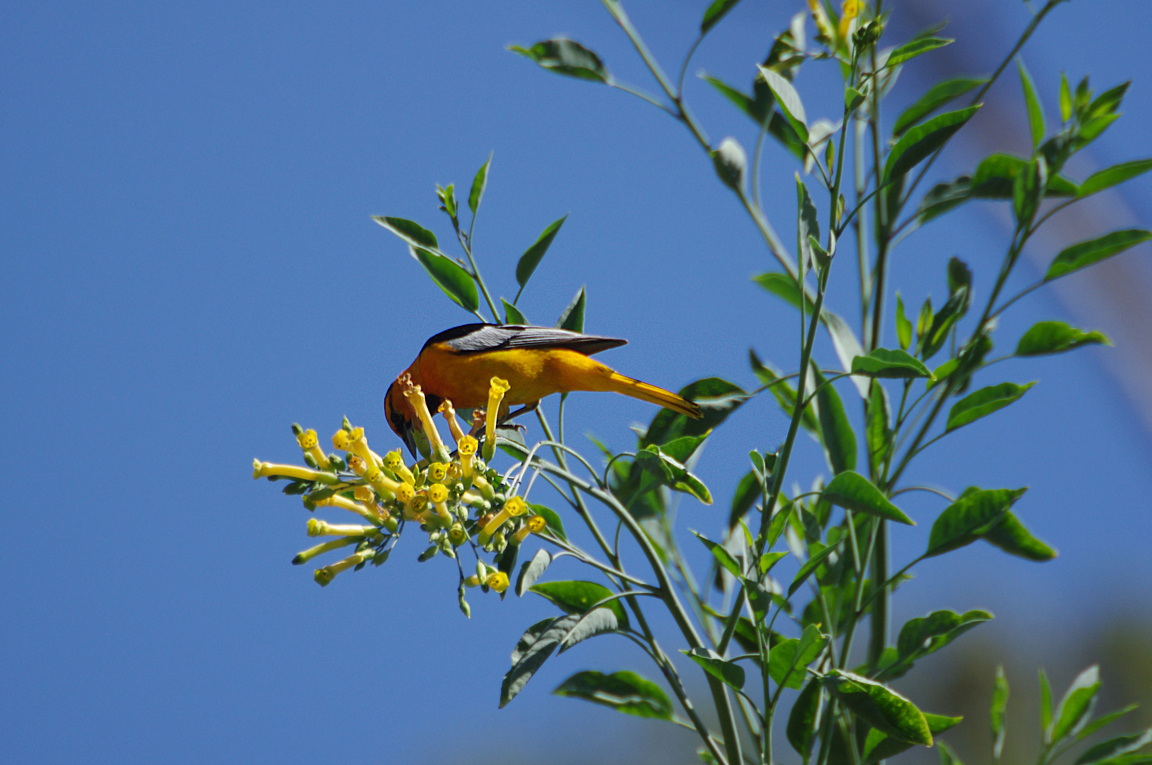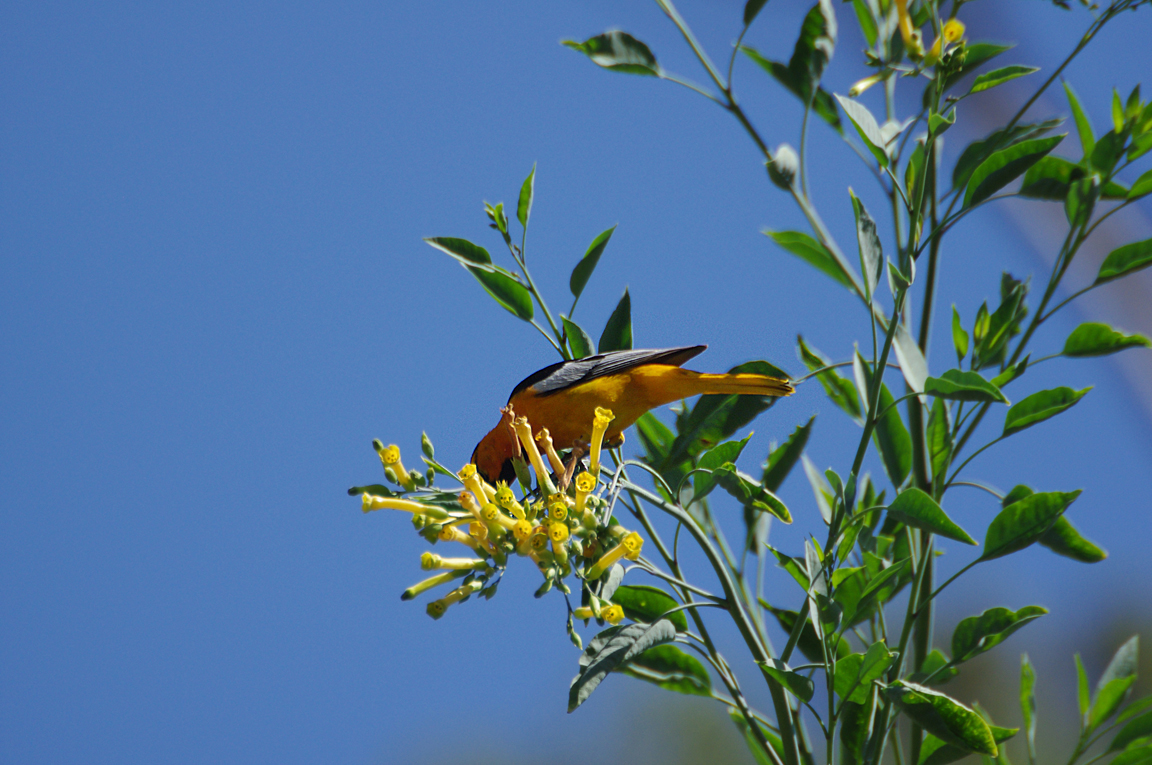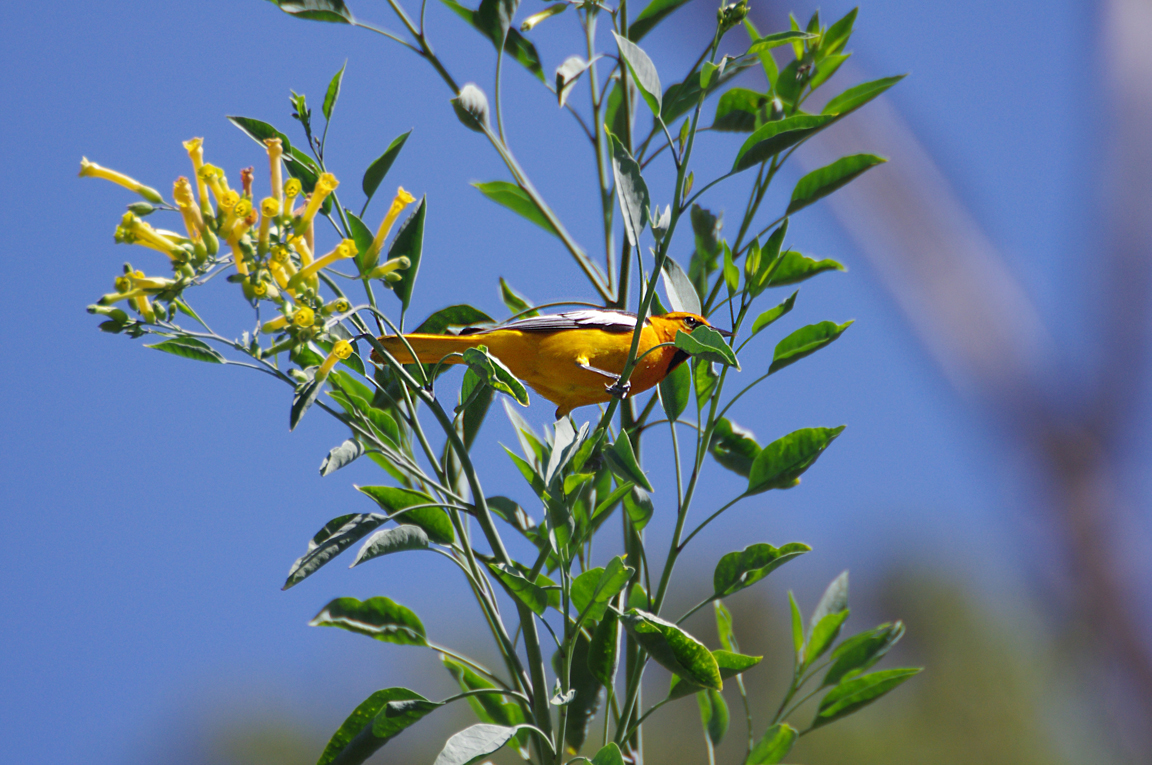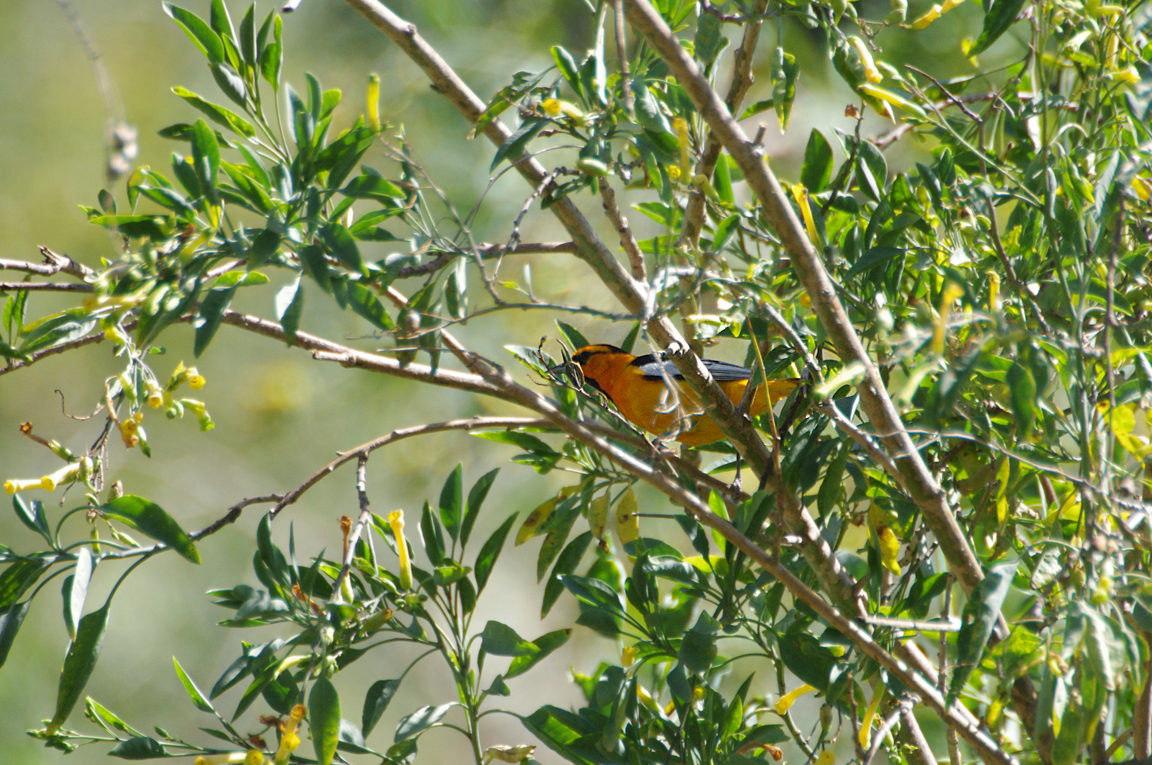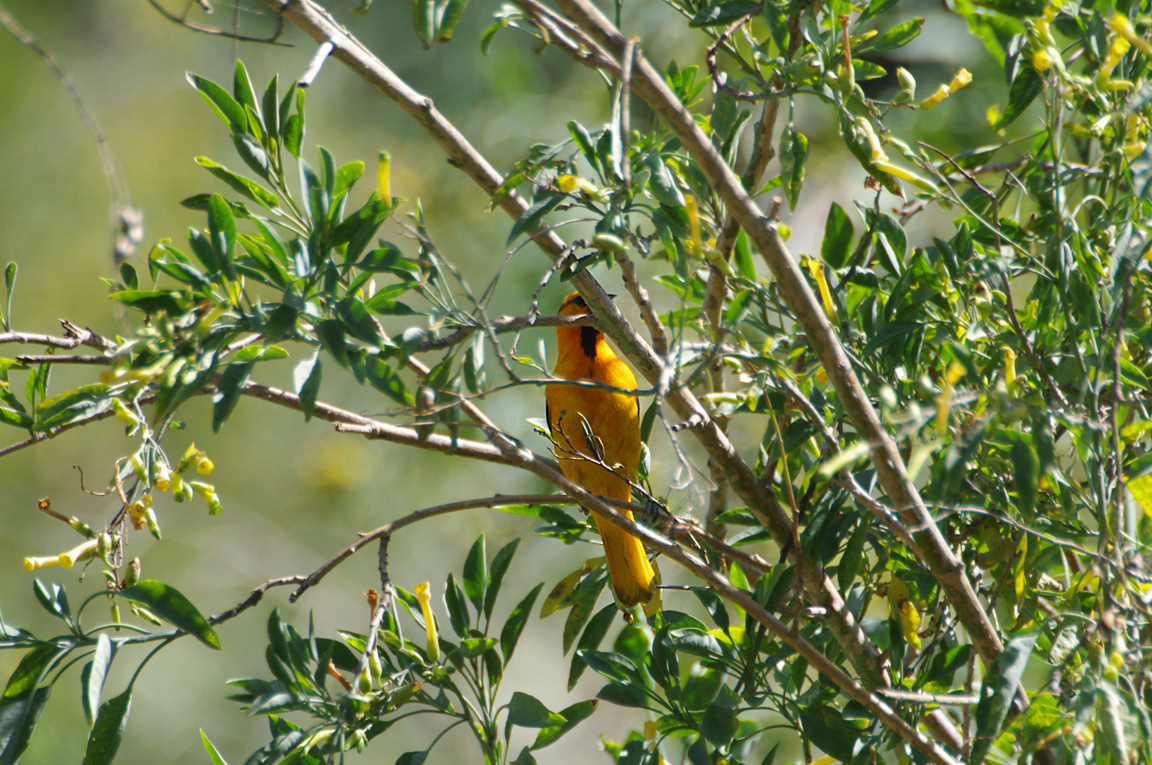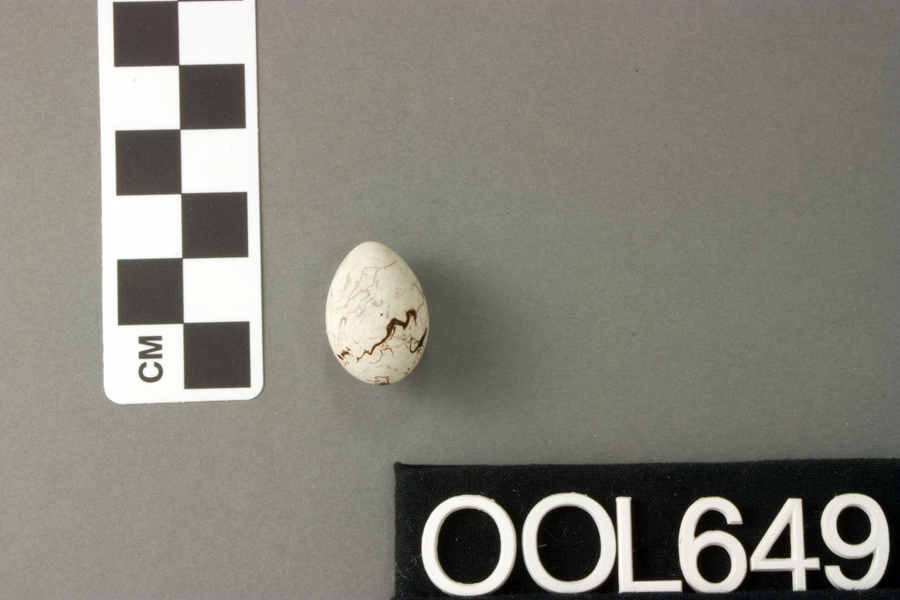|
|
|
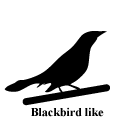 |
Bullock's Oriole
|
| Icterus bullockii | |
A bird of open woodlands in the American West, the Bullock's Oriole is especially fond of tall trees along rivers and streams.
Interesting Information
-
The Bullock's Oriole hybridizes extensively with the Baltimore Oriole where their ranges overlap in the Great Plains. The two species were considered the same for a while and called the Northern Oriole, but recently, they were separated again. Molecular studies of the oriole genus indicate that the two species are not very closely related.
-
The Bullock's Oriole's nest is not always placed in territory where the male advertises.
-
Both sexes of Bullock's Oriole sing, but the males and females sing different songs. The song of the female is similar to that of the male, but it ends differently and with harsher notes. Early in nesting period, and before and during nest-building, the female sings regularly, and may sing more than the male.
Description
Adult Description
-
Size: 17-19 cm (7-7 in)
-
Wingspan: 31 cm (12 in)
-
Weight: 29-43 g (1.02-1.52 ounces)
-
Medium-sized songbird.
-
Long tail.
-
Rather thin, straight, pointed bill.
-
One large or two small wingbars on each dark wing.
-
Orange or orange-yellow.
-
Male bright orange with black back, throat, top of head, and nape, with a slender stripe through eye.
-
Upper bill dark, with bluish cutting edges; lower mandible bluish gray, dull white at tip.
-
Eyes dark brown.
-
Legs and feet gray.
Sex Differences
Male brightly colored with orange underside and face, black back, head, and throat; female duller, with pale underparts, and without black.
Male
Crown, nape, and back black; remainder of head and underparts orange-yellow. Black eyeline and black on chin and center of throat. Rump orange-yellow to yellow. Middle tail feather black, the rest yellow, tipped with dusky or black. Wing feathers black, edged white; large white patch on wing
Female
Pale grayish brownish to yellowish upperparts, with indistinct dark streaking, but without black. Yellowish or dull greenish gray underparts, becoming paler on belly. Throat often with some black. Wings gray-brown, with one or two indistinct wingbars.
Immature
Juvenile resembles adult female but is generally brighter yellow below, and usually lacks black feathers. Immature male with orange-yellow face, a black bib, black stripe through eyes, a dusky top of head and back of neck, striped back, and orange tail. Wings dusky with two white wingbars. Immature female resembles adult female.
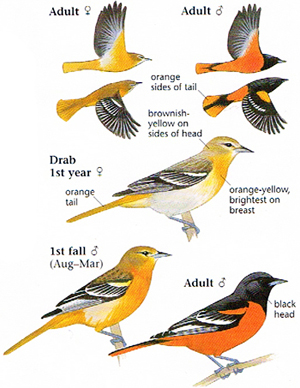
Photo taken from: The Sibley Field Guide by David Allen Sibley
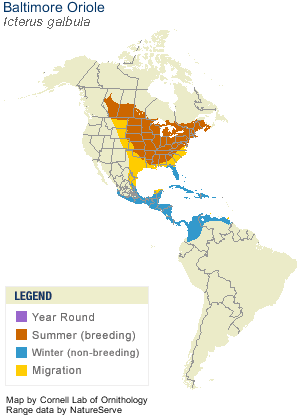
© 2003 Cornell Lab of Ornithology
|
Habitat |
|
Riparian and open woodlands, or woodlots with tall trees, including parklands. Winters in riparian woodlands and woodland edge, with some in pine, pine-oak, or fir forests. |
|
Behavior |
|
Gleans and probes in trees and flowers for insects and nectar. Visits feeders for sugar water. |
|
Food |
|
Caterpillars, fruits, insects, spiders, and nectar. |
Taxonomy
| Kingdom: | Animalia |
| Phylum: | Chordata |
| Subphylum: | Vertebrata |
| Class: | Aves |
| Order: | Passeriformes |
| Family: | Icteridae |
| Genus: | Icterus |
| Species: | Icterus bullockii |
Similar Species |
|
|
Bird Sound |
|
Song a series of rich whistled notes interspersed with rattles. Call a chatter. |
|
Eggs look like this |
|
Photo taken from: ARCTOS Collaborative Collection Management Solution |
